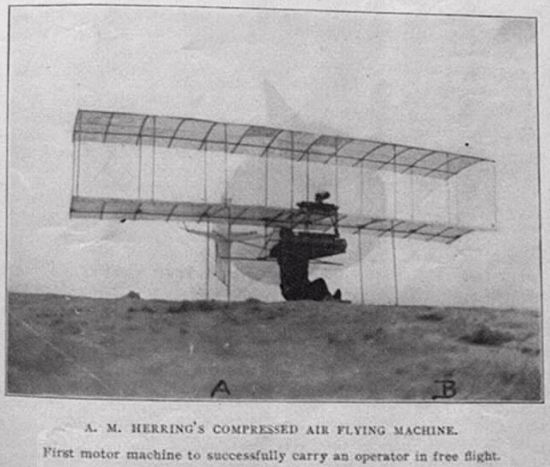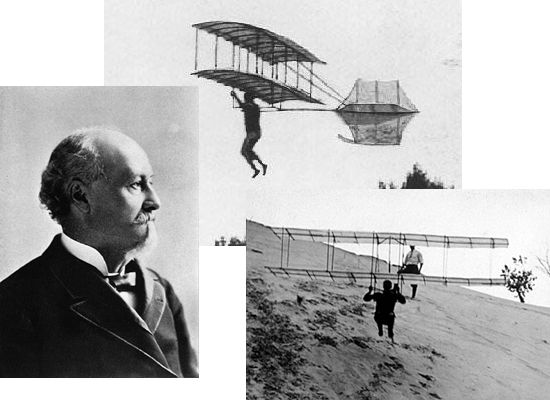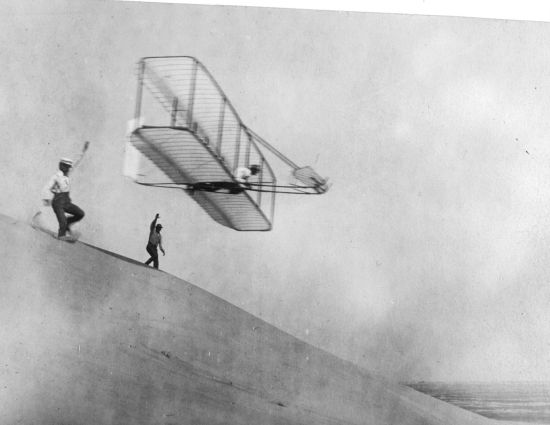|
||||||||||
|
|
||||||||||
|
||||||||||
|
|
||||||||||

One of Herring's craft happened to have a small compressed air engine aboard, but calling the plane "powered" is rather generous. Herring's engine was underpowered and far too weak to provide the thrust necessary to maintain flight. Furthermore, Herring's plane lacked a truly functional control system needed to steer a plane in flight. For these reasons, most historians have discounted any claims that Herring was the first to fly, a claim which Herring never made himself, as far as we can tell.
You also ask whether Herring and the Wrights knew of each other. I suspect they probably did, but not necessarily because they both happened to be bicycle makers from Ohio. Herring worked very closely with a well known aviator named Octave Chanute. In fact, most of Herring's machines were copies of those he had worked on with Chanute, which themselves had been inspired by a famous German glider builder named Otto Lilienthal.

Chanute was more than an experimenter, and he is best known today for his efforts to communicate with other major figures in aeronautics and document their work. He researched this field extensively from 1875 through the early 1900s, and his findings were collected in the landmark 1894 book Progress in Flying Machines. The Wright brothers avidly read this book, and it is generally believed to have been one of their primary inspirations to start experimenting with flight themselves. The Wrights also contacted Chanute and struck up a close friendship with him that lasted for many years. Since Herring worked for Chanute, it is likely that he and the Wrights were aware of each other through this mutual relationship.

Your comments also seem to imply that perhaps the Wrights borrowed or stole some of Herring's ideas in building the
Wright Flyer. However, this conjecture seems very unlikely. Many of Chanute's ideas directly inspired both
Herring and the Wrights, but there is no evidence that Herring and the Wrights had any direct involvement with each
other. Though Herring happened to experiment with a "powered" glider, his work paled in comparison to that of
Chanute and the Wrights, and he had no real impact on the course of aeronautics outside of his work with Octave
Chanute. What set the Wrights apart was their introduction of lightweight internal combustion engines and the
development of coordinated turns using a rudder and wing warping. These two innovations
were the keys to making the powered airplane a practical flying machine.
- answer by Jeff Scott, 19 December 2004
Related Topics:
What are the most significant events in the history of aviation and space flight?
Read More Articles:


|
Aircraft | Design | Ask Us | Shop | Search |

|
|
| About Us | Contact Us | Copyright © 1997- | |||
|
|
|||